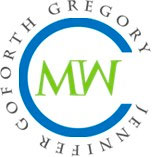Guest Post: Cat DiStasio rounds up advice for writing better conclusions

Note from Jennifer: Every writer faces challenges in their writing process. Some people stress out over interviews, while others struggle with certain types of deliverables, like white papers. Recently, in the Freelance Content Marketing Writer group on Facebook, Cat DiStasio confessed to stumbling over writing conclusions and was met with loads of insightful advice from the other writers in the group. I asked her to round up some of the best tips and techniques to share with my readers here. Read on for suggestions to help you write better conclusions for your content marketing assignments, and follow her on Twitter as well.
By Cat DiStasio
I hate writing conclusions. There, I said it. It’s true and it’s been true as long as I can remember. But I’d like to stop hating them, so I asked my fellow content marketing writers in my favorite Facebook group for some suggestions. I also read quite a few articles written by professional writing coaches, because there’s no such thing as too much good advice. (Right?)
I learned a lot. Here are some of the best suggestions I’ve come across, which I think might actually help me get over my hatred of writing conclusions. (We’ll see!)
1. Recycle your introduction.
This might seem like a bit of an obvious suggestion, but many writers advocated for reiterating your introduction in the conclusion. Some even suggested taking a few sentences from the introduction and rewording them in the conclusion.
2. Go old school.
That’s old school as in grade school. Just like in the five paragraph essays we all learned to write in our youth, you can use your conclusion to summarize the points of your content marketing deliverable. (Another confession: this has been my go-to method and I find it pretty boring. It’s an option, but probably not the best one.)
3. Last things first.
A surprising number of writers suggested writing the conclusion before writing the rest of the assignment. Many of them admitted that they may revise that conclusion before they’re done, but starting with a draft of a conclusion gives the writer a point to “write to” which can help ensure the conclusion is tied into the rest of the deliverable.
4. Skip it.
Some content marketing clients may prefer a more journalistic style, which allows writers to end a piece with the final point and forego a formal conclusion. This might be a strategy you want to ask a client about before going for it, unless you prefer to ask for forgiveness (and write a conclusion as a revision, of course).
5. Use a quote.
Ending a content marketing piece with a strong quote is another go-to technique. Obviously, this tactic doesn’t work for pieces without interviews, but if you have a source to quote, consider reserving a juicy quote to round out the end of your piece.
6. Predict the future.
You can also use your conclusion to suggest what happens next, either for the reader or the industry. This approach might work best when coupled with a summary-type conclusion, and it can help if you try to answer the question, “What now?”
7. Call to action.
Most content marketing deliverables will include some sort of call to action, so consider writing the CTA into your conclusion. Whether subtle or overt, outline specifically what you want the reader to do next.
8. Ask questions.
Some writers like to incorporate questions into their conclusions, even as the closing line. The question might be a reiteration of the introduction in disguise, or a callback to another central point you made earlier in the piece.
9. Suffer the consequences.
A few writers suggested writing about what might happen if the reader doesn’t follow through with the advice in the article.
10. Add a disclaimer.
Your conclusion gives you an opportunity to clarify the advice you’ve given in the article, and couch any points the reader could potentially misinterpret. If you choose this route, make it subtle and embed it in the larger structure of your conclusion.
11. Keep it succinct.
No conclusion is more boring than one that goes on too long. Resist the urge to reiterate every single point you’ve made, and try writing a conclusion that is just a few sentences long. Using your words sparingly can help make for a more powerful conclusion.
12. Drive it home.
Another age-old conclusion strategy is answering the question, “So what?” Use the conclusion to make sure your readers know why they should care about what they just read. Hopefully, it will already be apparent, but the conclusion gives you a chance to put a spotlight on one big takeaway.
If I were writing a journalistic piece, I’d leave it at that. But in the spirit of content marketing, I won’t be so cruel. One thing to keep in mind as you draft conclusions for content marketing deliverables—whether you write them before or after the body of your piece—is that any one of these strategies will help you create a more powerful conclusion, but you can also mix two or even three different techniques for even better results. Most of all, think about your audience and how they will read your piece. What will they be thinking or feeling at the end of the body of your piece? What do you want them to remember about what they read? What do you want them to do next?
What is your best strategy for writing powerful conclusions to content marketing deliverables?

